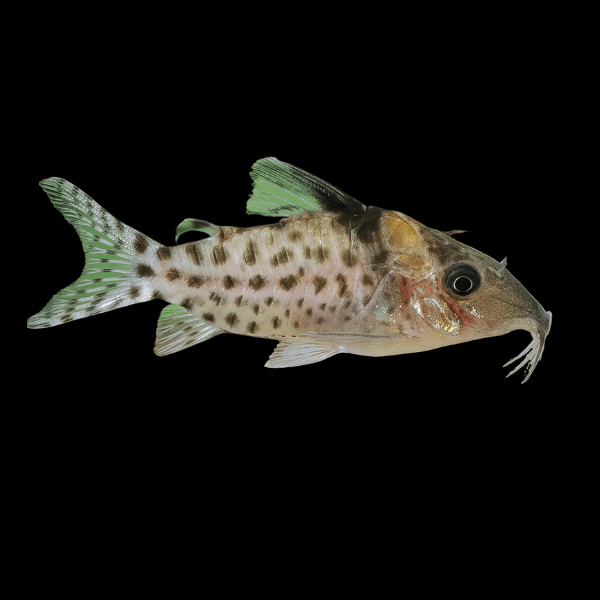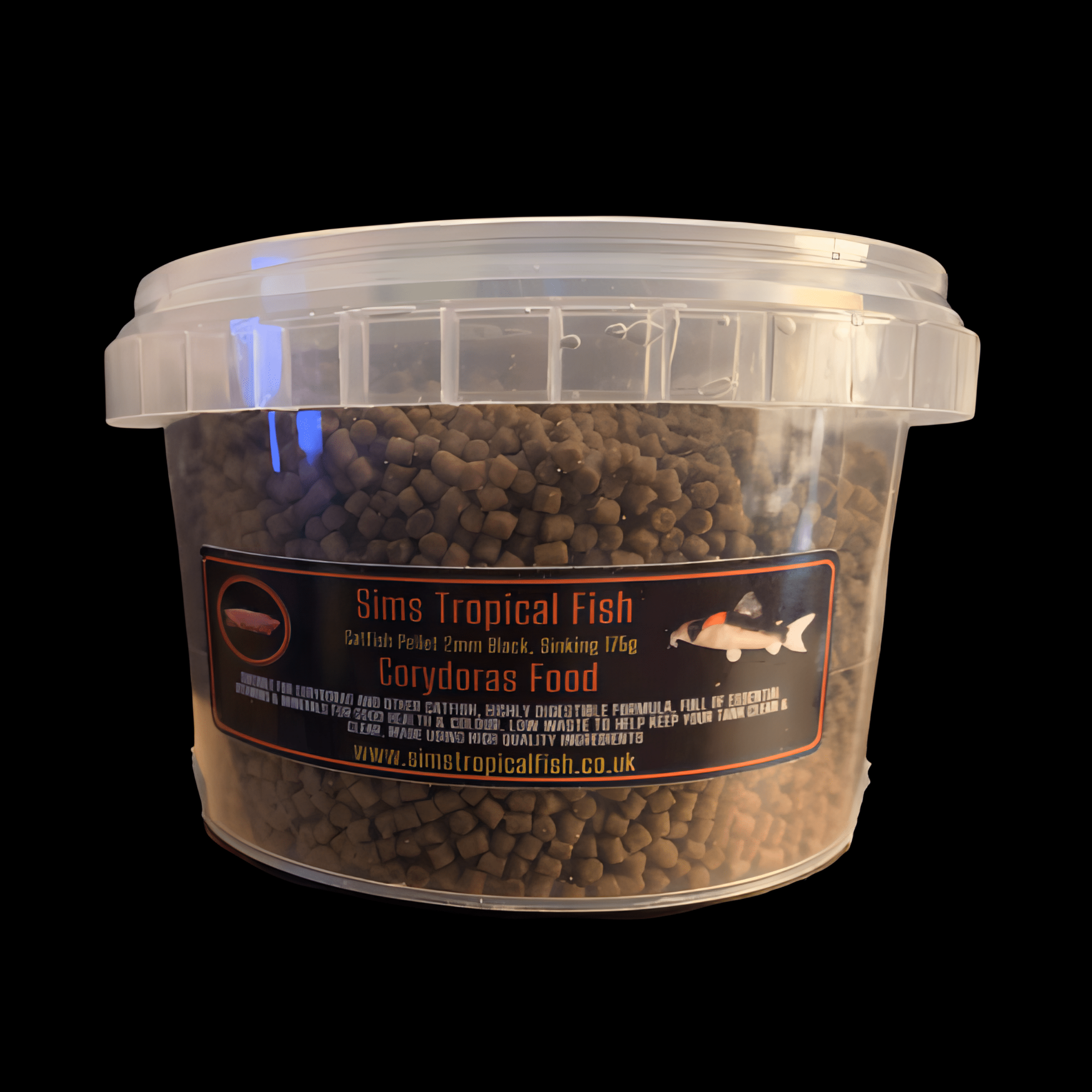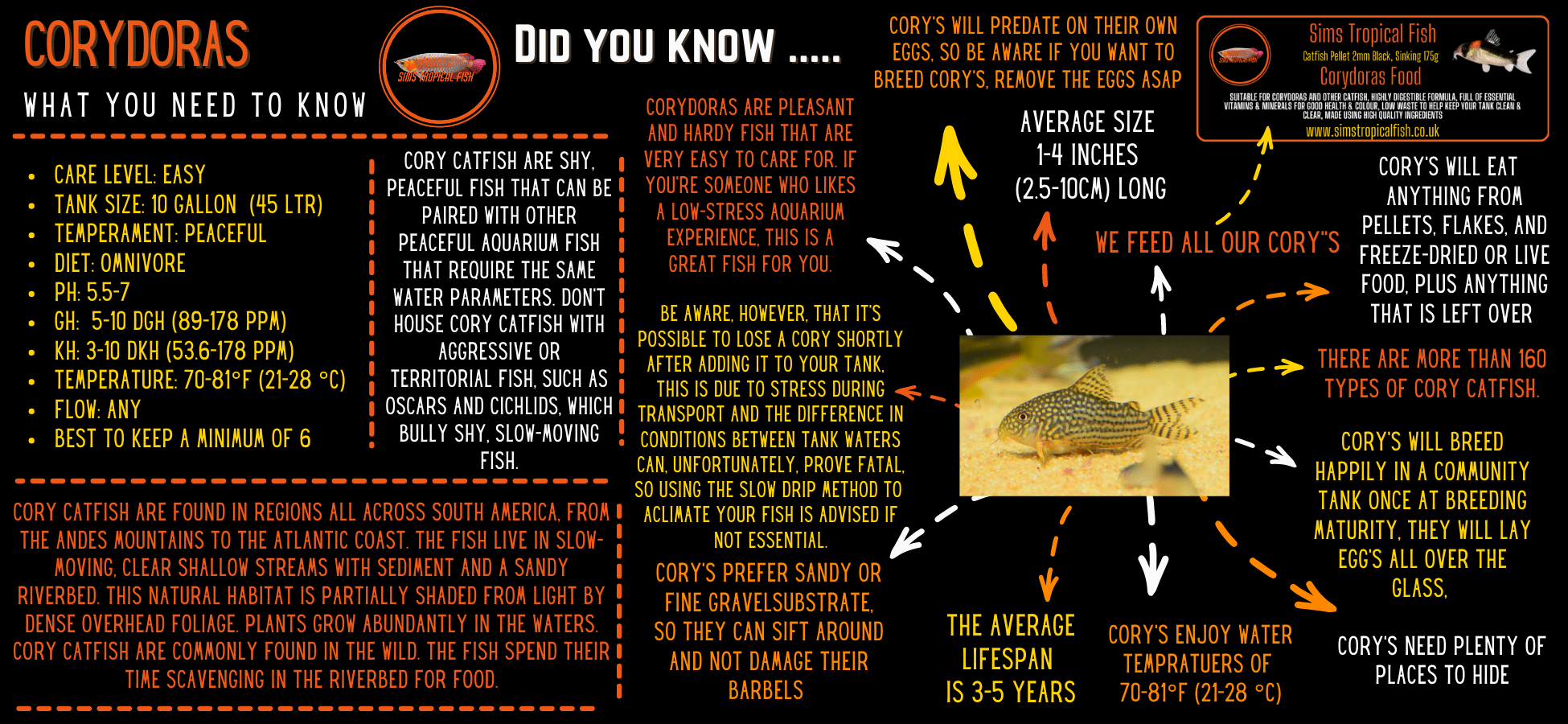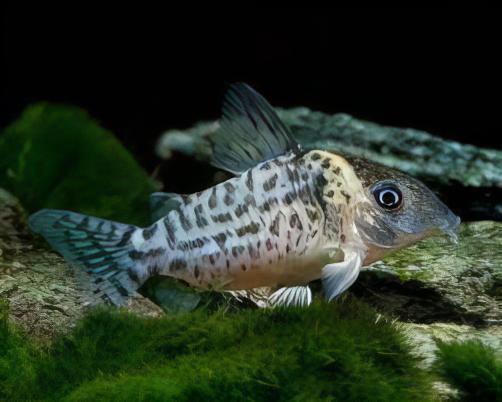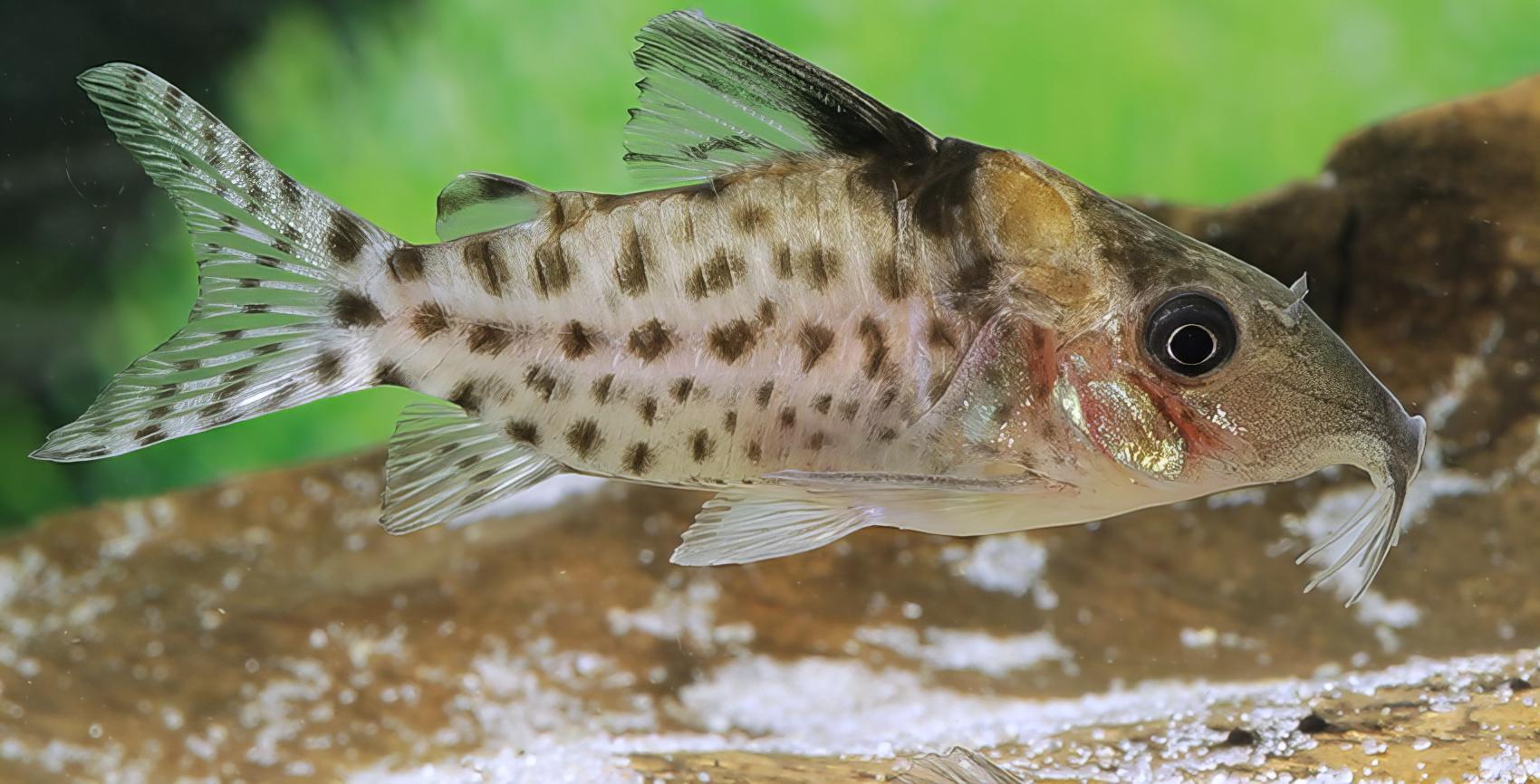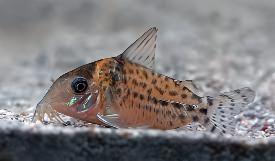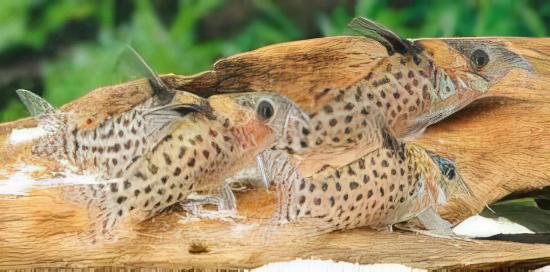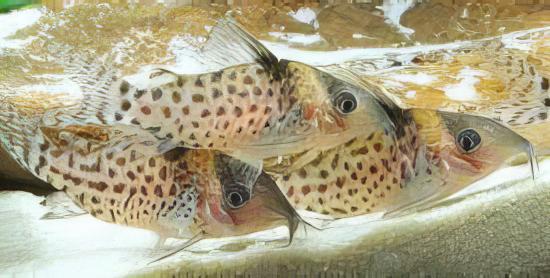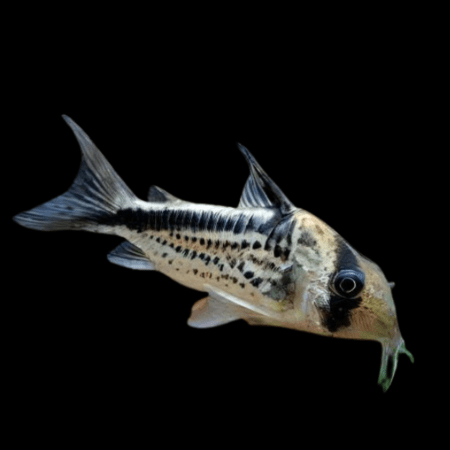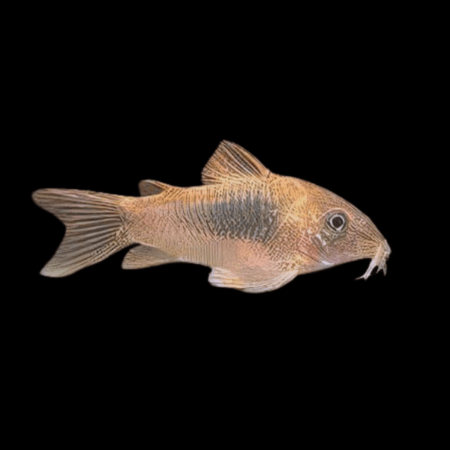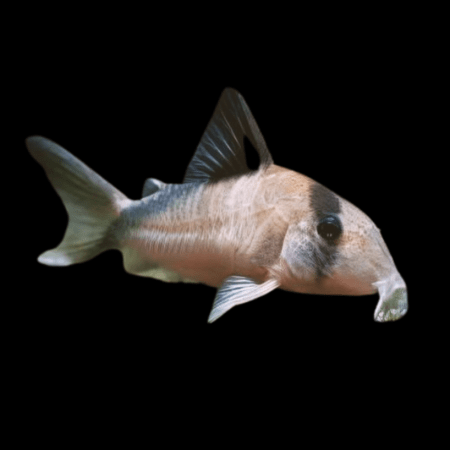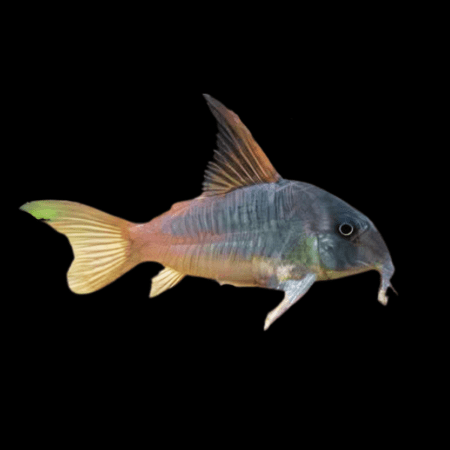Description
Spotted Corydoras Punctatus
Its first characteristic is of course its highly developed gregarious instinct. The Corydoras Punctatus must therefore live in a shoal of several individuals. Regarding this point, it is estimated that:
- group of 6 to 8 individuals: strict minimum
- group of 9 to 13 individuals: correct viability
- group of more than 14 individuals: behaviour similar to natural
Indeed, in the wild, the Corydoras live in a shoal of several hundred members! Note that 3 or 4 fish do not form a shoal, count rather 6 individuals minimum. If it is alone or with too few of its peers, it becomes stressed and this makes it quite susceptible to diseases.
Peaceful and calm, it is a bottom fish that likes to swim in the middle part of the aquarium where there is more current or along the windows of the aquarium. However, from time to time, it sometimes leaves this area at full speed to swallow a bubble of air on the surface.
If your Corydoras are completely inactive during the day, it may be due to a problem of cohabitation (other species intimidate them), a too small number of individuals, an unsuitable aquarium or a current too weak. Check these points and you will see your Corydoras activate even during the day!
Even if the corydoras are very fearful, you can, with gentleness and patience, accustom them to your presence. For this, you must always make very slow and very calm gestures. When your corydoras do not flee you, it denotes a level of fulfilment, security and confidence well above normal!
Cohabitation
Who can live with this Corydoras?
A community aquarium is accepted (it ignores the other occupants of the aquarium).
However, do not combine them with other gregarious bottom fish, except in very large aquariums. Cohabitation with a common Pleco (30 cm or 12 inches!) Is also to be avoided because it shares the same area of life and it can accidentally hurt a small Corydoras. Attention also to the predation of big fish.
Choose very quiet roommates because Corydoras are easily intimidated by species that are too bright or too big. It cohabits easily with the other fish of the Amazonian biotope living in the same geographical area as him, such as the Ember Tetra will make perfect roommates.
Breeding
How to breed this Corydoras?
The breeding of Corydoras Punctatus is possible in aquarium. The optimum age for breeding your corydoras is around 3/4 years old. Note that the older a female is, the higher the thickness of the eggs. They are thus more resistant and have a better chance of success, considerably increasing the number of fry. Before this age, you can get some fry all the same. If you want to make your corydoras breed, you understand the importance of installing them from the beginning in a suitable and well maintained aquarium, in order for them to live as long as possible, for a regular and successful breeding in quantity and in quality! You can provide a group of several males for 1 female.
The breeding aquarium (50 L / 11 Imp Gal / 13 US Gal) will have a small filter, a soft light, a temperature around 24/28°C 75/82°F and a ph at 6/7. Prepare the parents for spawning by feeding them with live or frozen prey (like mud-worms). Finally, a good water change with cooler and softer water should do the rest. Remove the parents and lower the water level once the laying is complete.
For more safety, you can treat eggs with methylene blue.
Its aquarium
Which aquarium for this Corydoras?
In general, two parameters are essential for the Corydoras aquarium: a non-cutting substrate and good filtration generating current.
Firstly the soil: it is imperative to use very fine gravel or sand (like beach sand). Indeed, it was discovered in early 2018 that sand played a key role in the oral hygiene of Corydoras. In addition, by swallowing this sand at full speed and spitting it by their gills in order to look for food, the Corydoras get rid of any parasites that could be fatal to them. It is imperative to avoid sharp ground like quartz, which damages the barbels of your fish, and is going to mutilate them completely.
Then the current: more than the length of the facade, it is especially the current that is important in an aquarium for Corydoras. Indeed, they are excellent swimmers and are… athletes! So, steer a strong current on the “middle” area of the aquarium, leave the bottom and the surface with a little less current. You will see your Corydoras feast on going swimming against the current in this area (if no other species intimidates them)! For everyone to rest, lower the intensity of the current during the night or stop it.
